Content
John Lennon´s 85th birtdhay
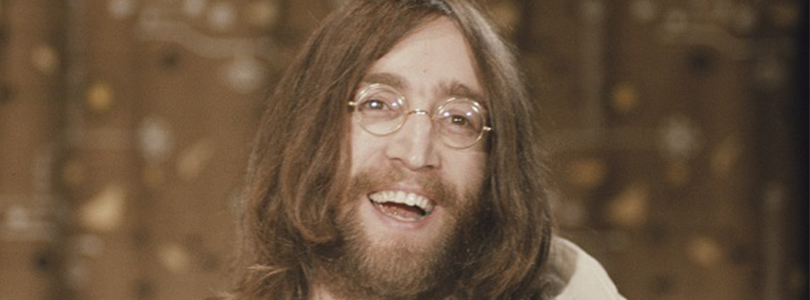
Lucrative icon
Founder of the greatest band of all time, icon of the peace movement, global brand: John Winston Lennon is one of the most famous personalities of the 20th century. And he is one of the most successful composers in pop history: in the United States alone, he topped the charts 25 times.
He wrote many of his number one hits together with Paul McCartney, with whom he formed the most famous and influential songwriting duo in history. He ranks very high in all rankings of the greatest singers, composers or guitarists in rock – often surpassed only by his colleague McCartney or their joint band, The Beatles .
But the fact that John Lennon is still present 45 years after his cowardly murder is not only due to his music. Lennon was a multi-faceted personality and a prolific artist who painted, wrote poems and books, and experimented with avant-garde art together with his second wife, Yoko Ono. However, he is remembered even more strongly as an activist for peace who wrote the most beautiful song for all those who can imagine a better world: ‘Imagine’.
A childhood in the shadows
In his life
In one of his greatest songs, ‘In my life’, Lennon created a musical monument to the places and people who shaped his youth:
There are places I'll remember
All my life, though some have changed
Some forever, not for better
Some have gone, and some remain
All these places had their moments
With lovers and friends, I still can recall
Some are dead, and some are living
In my life, I've loved them all
Lennon's childhood and youth were marked by loss: his father, a sailor, abandoned the family and disappeared. His fun-loving mother left young John with her older sister Mimi under pressure from the family. Her husband George Smith was a loving foster father, but he died soon. Just as adolescent John was beginning to rebuild his relationship with his mother, she was killed by a drunk driver. A few years later, shortly before the Beatles became big, John's close friend Stuart Sutcliffe, who had played bass in the band, died suddenly.
The death of his mother in particular was a traumatic event that Lennon would later process in several songs. No wonder he was a difficult, enigmatic young man: „I was the one who all the other boys' parents – including Paul's father – would say, "Keep away from him" ... The parents instinctively recognised I was a troublemaker, meaning I did not conform and I would influence their children, which I did. I did my best to disrupt every friend's home“.
Right to the top
Young John saw himself as an outsider, an artist and a musician. His Aunt Mimi, who wanted to prepare him for a respectable middle-class life, thought nothing of his ambitions: ‘The guitar´s alright, John, but you'll never make a living with it!’ Later, she is said to have pinned this sentence on a wall of the house that John bought her with his music millions.
After a tough ‘apprenticeship’ in the music cellars of Liverpool and Hamburg, Lennon rose to become perhaps the most famous rock star of his time as the band leader and rhythm guitarist of the Beatles. He was one of the first to write thoughtful, sophisticated lyrics that went far beyond the industry standard ‘boy meets girl’ lyrics: ‘Nowhere Man’, ‘A Day in the Life’, ‘Revolution’, “God”, ‘Help!’ and ‘Strawberry Fields Forever’ (Bob Dylan, who inspired Lennon, later even went on to win the Nobel Prize for Literature!). But at some point, Lennon became less and less interested in the band and sought new challenges. The Beatles broke up, and so he went his separate way.
Lennon and the trademarks
The Beatles, their managers and record companies undoubtedly earned a great deal of money. But they could have earned even more if they had worked with intellectual property rights at an early stage to control the proliferation of Beatles products. Today, bands earn excellent money with their licensed merchandising products; back then, hardly anyone thought about it.
It was not until decades after ‘Beatlemania’ that the former band members (or their heirs) came up with the idea of protecting their famous names as trademarks: in 2016, John Lennon's widow Yoko Ono registered ‘John Lennon’ as a word mark for various Nice classes (EM015697022 , EM015712987). For example, there was a licensed eyewear collection called ‘John Lennon Eyewear’.
Curiously, Ono (or rather her ‘The Imagine Peace Trust’) also registered a word and figurative mark ‘John Lemon’ (EM012073979). Ono's trademarks also include ‘Imagine peace tower’. This is the name of her light installation in Iceland, which shines into the night sky above Reykjavik every autumn between Lennon's birthday and death anniversary (EM007444656).
‘Lennonaid’ and Coca-Cola advertisement
Julian Lennon, John's son from his first marriage, secured not only his own name as a trademark (EM005001177), but also the puns ‘Lennongrass’ and ‘Lennonaid’ (EM018150577, EM018153185).
In recent years, the titles of well-known Lennon songs have often been secured as trademarks by third parties:
A company in Liechtenstein registered ‘Instant Karma’ as a trademark for eyewear, clothing and alcoholic beverages, among other things (EM012679809, IR1288394). ‘Working class hero’ (EM009750779) was temporarily secured as a trademark for bags and clothing by a Berlin company. ‘Ticket to ride’ was registered by a US firm for computer games (EM010620425). ‘War is over’, the subtitle of Lennon's 1971 Christmas song ‘Happy Xmas’ and the motif of an advertising campaign against the Vietnam War by John and Yoko, was temporarily secured as a trademark by a clothing company (EM012219441). And in 2013, the Coca-Cola Company registered ‘Give peace a chance’ as a trademark (EM011918653; Nice Classes 30,32).
Would Lennon have approved of all this?
Lennon today
Fluxus artist Yoko Ono, who was blamed by Beatles fans for decades for the break-up of the band, is now recognised as an eminent figure in late 20th-century art history. Still artistically active in her old age, she and Sean manage Lennon's lucrative estate and keep his memory alive with internet appearances, social media presences and new releases of his music.
‘Part of me,’ Lennon once said, "wants to be accepted by all facets of society and not be this loud-mouthed, crazy poet/musician. But I can't be what I'm not.‘ And yet he succeeded: not only is Liverpool Airport named after John Lennon (advertising slogan: ’Above us only sky,‘ from ’Imagine"), but so are schools, streets, awards and pubs.
The Beatle and patents
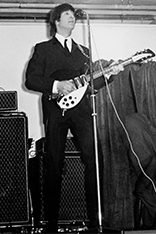
Lennon with the Beatles in Belfast, 1964
Unlike Paul McCartney ( ![]() WO001995014987A1 (0,97 MB)), Lennon never registered a patent. But his name appears in numerous patent specifications. In
WO001995014987A1 (0,97 MB)), Lennon never registered a patent. But his name appears in numerous patent specifications. In ![]() WO001995010138A1 (1,55 MB) (‘Audio signal processor’), for example, Lennon is named as the inspiration: "For example, in the 1960s, one of the Beatles, John Lennon, discovered that he could create a distinctive sound by distorting the sound of a tape played on a reel-to-reel tape deck. This musical technique, which he called "flanging," spurred several engineers to develop methods for electronically imitating the effect".
WO001995010138A1 (1,55 MB) (‘Audio signal processor’), for example, Lennon is named as the inspiration: "For example, in the 1960s, one of the Beatles, John Lennon, discovered that he could create a distinctive sound by distorting the sound of a tape played on a reel-to-reel tape deck. This musical technique, which he called "flanging," spurred several engineers to develop methods for electronically imitating the effect".
‘Play John Lennon!’
In addition, many inventors use Lennon or the Beatles to explain the operating principle of their developments. A typical example is ![]() DE102014203540A1(‘Systems and methods for controlling a dialogue context in speech systems’). Here is an excerpt from the patent specification:
DE102014203540A1(‘Systems and methods for controlling a dialogue context in speech systems’). Here is an excerpt from the patent specification:
"[0033] In the following another example is presented, in which the information which the user has to correct for an incorrect dialog path taken from the system is corrected. 1. ”Play JohnLennon.” 2. ”Ok. Set destination to John Lennon Avenue or street. Please enter number ” 3rd ”Wait. I want to listen to music; 4. system; ”Okay. Which album or title?&rdquo"
Similarly, ![]() WO001998027542A1 (1,25 MB) explains how it works using the search for Lennon and the Beatles; likewise
WO001998027542A1 (1,25 MB) explains how it works using the search for Lennon and the Beatles; likewise ![]() DE069833162T2 (2,26 MB) (‘Information storage medium and reproduction device therefor’) and
DE069833162T2 (2,26 MB) (‘Information storage medium and reproduction device therefor’) and ![]() WO002019046034A1 (1,34 MB) (‘Method, computer program, and system to realise and guard over a secure input routine based on their behaviour’). Facebook also used John Lennon to illustrate its patents (
WO002019046034A1 (1,34 MB) (‘Method, computer program, and system to realise and guard over a secure input routine based on their behaviour’). Facebook also used John Lennon to illustrate its patents ( ![]() WO002016085520A1 (3,47 MB),‘Searching for content by key authors on online social networks’), as did Apple Inc., which was involved in a long-running trademark dispute with the Beatles (
WO002016085520A1 (3,47 MB),‘Searching for content by key authors on online social networks’), as did Apple Inc., which was involved in a long-running trademark dispute with the Beatles ( ![]() EP0843260A2, ‘Access to media between networks’). One of the latest applications to use Lennon is
EP0843260A2, ‘Access to media between networks’). One of the latest applications to use Lennon is ![]() US020250265417A1 (2,36 MB).
US020250265417A1 (2,36 MB).
Activist and ‘working class hero’
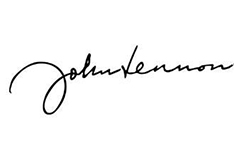
EM018981406, registered in 2024
John Lennon was probably the most multifaceted of all rock stars. After moving to the United States in 1970, he was monitored by the FBI for years. It wasn't just his peace happenings, such as the famous ‘bed-in,’ that made him suspicious. It was suspected that he sympathised with a small Trotskyist group and promoted revolutionary tendencies. However, records show that the FBI considered Lennon to be a minor revolutionary threat in the early 1970s, as he was ‘constantly under the influence of narcotics’.
Nevertheless, he clashed with US President Nixon, who wanted to expel him from the country, campaigned against the Vietnam War, presented himself as a ‘working class hero’, supported striking shipyard workers and Ireland's claim to Ulster, to name but a few of his areas of involvement.
A rock star on parental leave

Give peace a chance: Lennon and Yoko Ono 1969 in Amsterdam
It is also remarkable how Lennon transformed himself from a violent rowdy and cynical macho into a champion of women's rights. In 1975, after the birth of his son Sean, he took a five-year break from show business, became a stay-at-home dad and devoted himself entirely to his child and the household.
Then he started a comeback. But shortly after the release of his initially moderately successful album ‘Double Fantasy’, he was murdered in New York on 8 December 1980 – which immediately propelled the LP to the top of the charts.
Text: Dr. Jan Björn Potthast; Pictures: Rolls Press Popperfoto / Getty Images, JB Potthast/DPMA, DPMAregister, UK Government/Public domain via Wikimedia Commmons, Evening Standard Hulton Archive / Getty Images, Public Record Office of Northern Ireland via Wikimedia Commons, JB Potthast/DPMA, DPMAregister, Eric Kock Anefo via Wikimedia Commons
Last updated: 10 December 2025
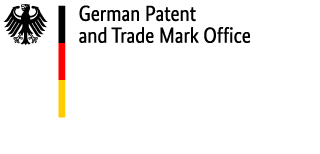


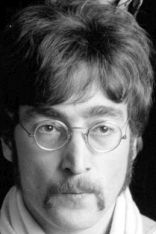
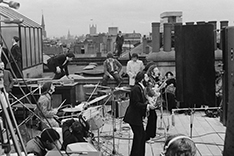
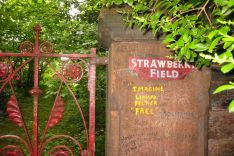
Not only protecting innovations
Social Media